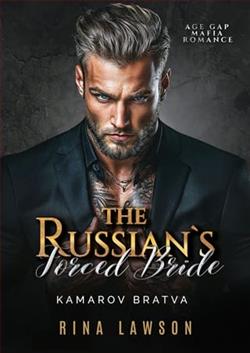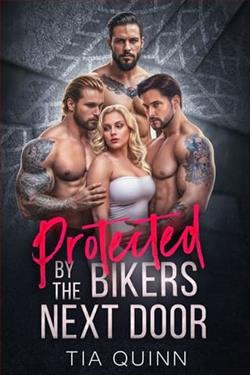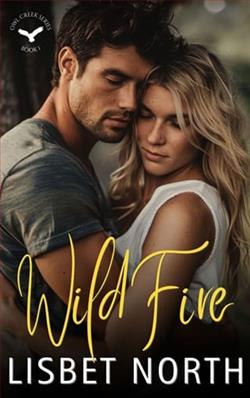Page 109 of Secrets Along the Shore
ALL THAT LIES BENEATH
P.I. SOPHIE WALSH - BOOK 1
D. L. WOOD
CHAPTER
ONE
There’ssomething terrifying about staring into the eyes of a serial killer.
In any other person, when your gaze meets theirs, you find something—warmth, anger, fear, light—something telling you a soul resides inside. A testament to the being within.
I’ve heard it said that sharks have dead eyes—cold, soulless orbs serving as lasers to zero in on prey. I never fully comprehended the description, never having seen a shark up close myself.
At least not before this case.
Now I understandexactlywhat it means.
As I stare into the eyes of defendant Kurt Fogerty from my seat in the courtroom gallery, I see nothing alive.
Nothing human.
Fogerty unabashedly holds my gaze in return, the corner of his mouth rising in a twisted delight I can’t fathom, and don’t want to. It’s been like this through the whole trial. I’m not sure why I, out of everyone in here, seem to have caught his eye. I’m nothing special. Thirty-five, brown eyes, long brown hair—usually with a fair number of knots and thrown into a twist or ponytail—and coming in at a whopping five foot three. Nothing here to justify the Nicholson-worthy grin that only gets creepier the longer it lasts.
Not caring whether he wins this visual game of chicken, I lookaway. As the primary investigator on this case, I’ve had enough of him to last a lifetime.
I sit here today, in the first row behind the prosecution table, after almost two years of trying to put this man away. Though my hours on this investigation would suggest otherwise, I’m not employed as a full-time investigator with the Mitchell County Sheriff’s Department or Mitchell County D.A. I’m a private investigator who the sheriff brings in on contract when the small county’s needs go beyond the single investigator he can afford to keep on the payroll full-time. Most often that happens in long-term, all-consuming cases, like say, a string of serial murders. The D.A.’s minuscule state budget leaves his office with no investigator at all, so it’s not unusual for him to hire me for his big cases when he needs a little extra punch.
This was one of those times.
That’s how, on an otherwise beautiful spring Friday in north Alabama, I—Sophie Walsh, P.I.—have landed in a cherry-paneled courtroom packed to overflowing. Journalists from all over the state, and one national network, have come to hear for themselves whether the jury believes Kurt Fogerty andThe Perfect Princess Killerare one and the same.
The nickname callously assigned by media from the outset stirs a reflexive nausea I have to fight back. I should be numb to it by now. I’ve heard it thousands of times in meetings with the D.A., sheriff, on the news, online, out of the mouths of people in my community…but it still churns my stomach. I’ve had to look at pictures, read the coroner’s reports, endure the gut-wrenching tears of parents—and somehow put it all in an emotional lock-box, so I could remain professionally detached.
All of it but that name.
Call me crazy, but evil shouldn’t have a catchphrase.
The week-long trial ended an hour ago, when the jury retired to deliberate. I was down the street at Benny’s BBQ, just about to dive into my sauce-slathered pork sandwich and curly fries—the first food I’vealmosthad all day as my growling stomach reminds me—when I got word the verdict was in. Now everyone’s back, waiting under the fluorescent lights hanging from cork ceiling squares streaked withJackson Pollock–esque water stains. A nervous electricity buzzes through the room that ironically matches the faint hum coming from a flickering fluorescent bulb, apparently on its last legs.
I catch the eye of a man strikingly similar to Fogerty—his brother, Harlan. His stare isn’t so much evil as just plain mean. During the investigation, I spoke to many members of what I suspect is Kurt Fogerty’s unnaturally straight family tree. Nearly all of them live in the middle of nowhere in western Mitchell County, Alabama. Nearly all of them also have a record, more attitude than sense, and a deep dislike for all things police related.
Including me.
The last time I had the pleasure, three preteen Fogerty cousins chased my Jeep Cherokee down their drive, hurling rocks and landing a few good dents in her. I’m pretty sure Harlan gave them the go-ahead from the porch. Now he’s staring at me like he wishes he could come at me with every Fogerty in his arsenal.
A loud creak sounds from the direction of the bench and my gaze swivels. A door on the back wall swings open and the faces I have been watching all week file in. The diverse group includes old, young, and all ages in between, as well as a wide variety of careers—firefighter to banker to homemaker. It covers the financial spectrum too. I spot a Cartier watch on one middle-aged guy, and jeans on a twenty-two-year-old with more holes than my landlady’s sourdough. Though to be fair, the jeans might have cost three hundred dollars. I’m decidedly in the Millennial realm, with a Gen-X attitude to boot, and can’t—don’t want to—keep up with Gen-Z trends.
However, whatever these jurors’ differences may be, they at least have one thing in common.
Every single face is unreadable.
An anxious heat crawls all over me. I’m desperate to know how this is going to go. After all these months, Ineedto know. But my search for a hint in their expressions is fruitless. The hard lines and blank stares tell me nothing. Like everyone else, I’m going to have to wait to hear from the jury foreperson’s lips whether the dead will have justice.
Or not.
I’ve spent hundreds of hours working this case. Weeknights, weekends. Overtime. I’ve eaten more slices of cold pizza and drunk more bad coffee—because long work days stretched into long work nights—than a person should and still be alive. I’ve done everything I can to ensure a guilty verdict. Uncovered every shred of evidence and wrapped up every loose thread I could pull on to make sure the horrible excuse for a human being sitting behind the table opposite me answers for his crimes.















